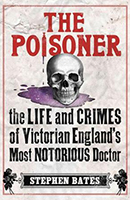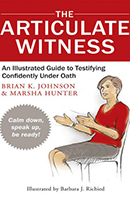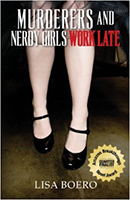 Verdict: It’s a Keeper
Verdict: It’s a Keeper
The Poisoner: The Life and Crimes of Victorian England’s Most Notorious Doctor
By Stephen Bates (New York, NY: The Overlook Press, 2014). 368 pgs. $27.95. Order, www.overlookpress.com.
Reviewed by Diana Camosy
In 1856, Dr. William Palmer was charged, convicted, and hanged for murdering his friend John Parsons Cook by strychnine poisoning. The case against him was entirely circumstantial. The trouble for the doctor was that there was absolutely no circumstance in his favor. In his exhaustively researched book, Stephen Bates shows us why. The Poisoner is a rich tapestry depicting the most sensational crime of the Victorian era, reading as though Charles Dickens wrote a history book.
Palmer was a gentleman born to a wealthy family, but he had a penchant for horse-racing. He spent large sums to purchase and stable horses; he bet even larger sums on the outcomes of races; and he had an unfortunate habit of losing. To cover his mounting expenses, he borrowed money at exorbitant interest rates (even forging his mother’s signature for some loans, in case his own money was not enough to make the payments).
Want to Review a Book?
Please request a book and writing guidelines from Wisconsin Lawyer managing editor Karlé Lester, at klester@wisbar.org or (608) 250-6127. Reviewers may keep the book reviewed. Reviews of about 500 words are due within 45 days of receiving the book. Reviews are published, space permitting, in the order received and may be edited for length and clarity.
As Palmer’s debts got out of control, he took out life insurance on his wife and brother, both of whom conveniently died. Cook – a horse-racing friend on a winning streak – suddenly passed away, and his winnings disappeared, after Palmer’s creditors came to collect. There would have been no trial, however, without Cook’s stepfather, who doggedly investigated his stepson’s mysterious death. Moreover, there would have been no “Trial of the Century,” without numerous lurid details that editors knew would sell newspapers. (This review barely scratches the surface of Palmer’s sordid career.)
The 12-day trial is the book’s centerpiece and the part lawyers will find most fascinating. The author shows a legal system plodding into modernity: there were no appeals; the defendant’s right to counsel was still new; and rules of evidence were hashed out case by case, now that defendants actually had attorneys to dispute prosecutors’ charges. A thorough recounting of the crime and the difficult investigation that followed provides ample fodder for then-and-now comparisons. The book also takes a few detours into the corrupt world of horse-racing, the seedy life insurance market, and the creation of daily newspapers, to illuminate more of Palmer’s milieu and Victorian society more generally.
If the book has any flaw, it is that there is almost too much detail. The author has a trove of archives to draw from, and it appears he did not want to leave anything out. If the details are too much, it is because Palmer is a highly unnerving character, as are many of the eccentrics in his orbit. The author, however, handles his subject with wit and enthusiasm and makes sure the reader is never too deep in the weeds. History buffs, mystery lovers, true crime fans, and lawyers will all find this an engaging book.
Diana Camosy, U.W. 2013, is a staff attorney with the National Veterans Legal Services Program in Washington, D.C., where she focuses in Agent Orange litigation.
 VERDICT: Not for Me, Maybe for You
VERDICT: Not for Me, Maybe for You
The Articulate Witness: An Illustrated Guide to Testifying Confidently Under Oath
By Brian K. Johnson & Marsha Hunter (Phoenix, AZ: Crown King Books, 2015). 60 pgs. $8.99. Order, www.amazon.com.
Reviewed by David J. Berg
The Articulate Witness, by communications consultants and trial advocacy instructors Brian K. Johnson and Marsha Hunter, is a short, helpful, and informative book; however, one question that occurred to me was for whom is it most helpful? Witnesses or lawyers? While the book contains a lot of useful information, I think that it is still too much content for most witnesses. This is especially true for client-witnesses, who would be better served by learning what they need to know from their lawyer during testimony-preparation sessions. Further, I do not advise offering this book to a nonclient witness because doing so might cause the adversary to accuse the witness of bias.
On the other hand, this book would be extremely helpful to the beginning lawyer, and I highly recommend it for that reason. It is divided into four sections: Behave Confidently, Think Confidently, Speak Confidently, and Putting It All Together. The first section addresses how a witness should behave physically to answer questions most effectively. It describes such things as the best position for a witness to sit in and mannerisms to encourage and avoid during questioning.
The second section gives the witness basic tips on what happens at a deposition, what types of questions to expect, how to deal with the questioner, and how best to formulate answers. Topics include how to ask for a question to be repeated when the witness does not understand it and the need to expect open-ended questions that begin with question words such as what, when, or where, or that use command words such as describe, explain, or tell us.
The third section contains advice about how to use one’s voice, speech pattern, and word choice to make answers more powerful. The authors counsel potential witnesses to, among other things, think in silence – momentarily – between phrases and sentences, avoid uptalk, emphasize important words, and prepare for testimony by rereading one’s prior statements.
The final section offers additional advice for testifying, such as not to begin answering a question until the lawyer has finished asking it, taking a moment to think before beginning the answer, never guessing, and not volunteering additional information.
I have one criticism of the book. In the introduction, the authors say witnesses should talk to and trust the lawyer who has called them on direct examination, regardless whether the lawyer is the witness’s lawyer or merely has called the witness to deposition or trial. I disagree. A witness who is not the lawyer’s client has no reason to trust that lawyer. The client’s interests might not coincide with the witness’s interests. Individuals testifying simply because they are eyewitnesses should remember they have no friends in the deposition room or courtroom.
David J. Berg, Syracuse 1987, practices in Milwaukee. dave@berglegal.net
 VERDICT: Not for Me, Maybe for You
VERDICT: Not for Me, Maybe for You
Murderers and Nerdy Girls Work Late
By Lisa Boero (Marshfield, Wis.: Nerdy Girl Press, 2013). 350 pgs. $11.45. Order, www.amazon.com.
Reviewed by Kara Burgos
Murderers and Nerdy Girls Work Late is about a small-town Wisconsin (Marshfield) girl who lands a summer position with a large firm in St. Louis, where she is entering her third year of law school. Liz Howe is not your typical law student and the firm is not the typical big-city firm, although the writer would have you believe otherwise. Liz has a rare neurological disorder that prevents her from recognizing any face, including her own. Thus, she must rely on every other sense to get her through all the trials and tribulations of life, not only college and law school. But readers will not see much of this journey; they meet Liz as she finds herself at the center of a murder at the firm.
Liz is the first to come upon the dead body and becomes super sleuth to the St. Louis Police. Why? You guessed it, her super skill set, courtesy of her neurological disorder. Next enters the love story, because of course, she falls for the lead detective, a beautiful, intelligent gem, looking to make a name for himself in a field in which looks and money don’t get top billing. And so the story goes … murder mystery, love story, small-town girl trying to make it in the big city; it’s not clear which is the central theme.
It took about half the book for me to decide it was good, not great, but a passable first novel. I definitely think Boero has promise as an author, but she needs to develop her characters and plot more deeply. I understand she will be starting a “Nerdy Girls” series.
The book’s weak part for lawyers is the basic level of the descriptions of legal terms and events we see and deal with daily. The average lay readers will likely appreciate such explanations. Although the legal terminology was sufficiently explained, there was a lack of depth to the unfolding characters and plot line. The author should use her descriptive attributes to further develop each character and the unfolding drama.
There was intrigue, a murder mystery, and a love story. I will grant that I did not figure out the plot until the very end and thus, the author had me wanting to read through the book. However, I was a bit disappointed at the quickness of the “ending.” The love story is what will likely move on in the series.
The main character’s neurological disorder is quite interesting and could have been explored more. I think readers would find fascinating both its discovery by the main character and how she uses and deals with it her whole life.
I do think nonlawyer readers will enjoy the book more than lawyers will. It had promise, but I was not left with a desire to read Boero’s next venture. She has promise but not enough to make me eagerly wait for the next adventure of a “Nerdy Girl.”
Kara Burgos, Marquette 1995, practices with Moen Sheehan Meyer Ltd., La Crosse.
